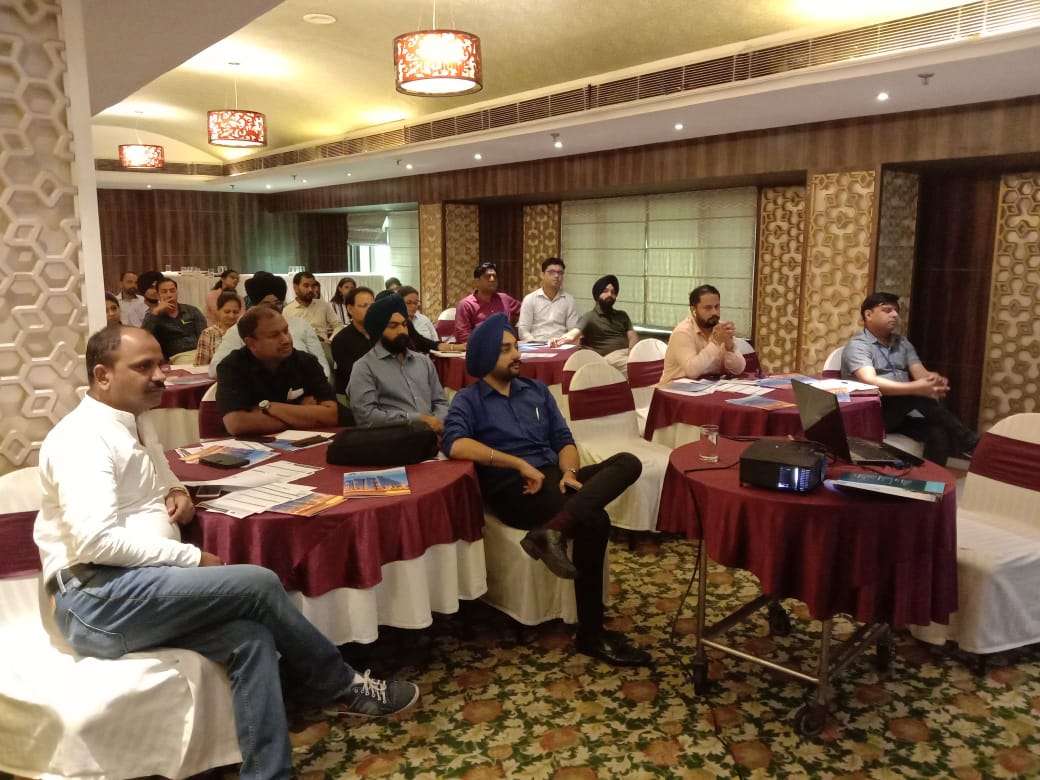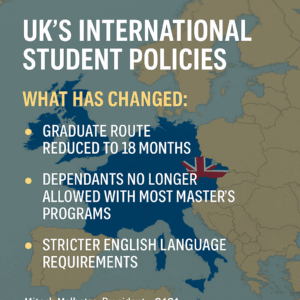Could admitting millions more immigrants over the next decade be the jolt the U.S. needs to revive its economy, culture, and politics? After four years of restrictionism under President Trump, ongoing border controversies, and an escalating culture war led by nativists, this idea may seem counterintuitive or even far-fetched. But recent labor market trends, demographic changes, and even accelerating climate change all point to dramatically increased immigration as a logical catalyst for national renewal. Becoming the most welcoming country on Earth for migrants—breathing new life into our most flattering, if too often inaccurate self-image—could be our salvation.
To see the potential upside of increased immigration requires us to examine current realities with fresh eyes. For decades, advocates of restriction have dominated the national conversation around immigration, cloaking their xenophobia under the false claim that immigrants pose a threat to U.S.-born workers. Liberals have too often failed to challenge this claim, fearing that expansive immigration policies are a path to political oblivion. But our research shows that the conventional wisdom underlying both parties’ policies is wrong: Expanding immigration is the key to economic revitalization and the most effective means to counter the continuing authoritarian threats we face in the post-Trump era.
More from Deepak Bhargava | Ruth Milkman
A central fallacy of the “immigrant threat” narrative—according to which immigration has negative economic, political, and cultural consequences—is that immigrants take jobs from native-born workers. But the U.S. regions with large numbers of immigrants are both more prosperous and more politically progressive than those with few immigrants. Research by one of us (Milkman) shows that the reversal of fortune suffered by non-college-educated workers over the last four decades is due not to immigration but to the actions of employers: outsourcing jobs, attacking unions, and deliberately degrading labor standards.
Consider the case of meatpacking, which was once a unionized industry employing white U.S.-born workers with high wages and good benefits. Employers actively restructured the industry beginning in the 1970s, cutting costs by relocating production to the rural areas where cattle are bred, and where unions are weak or nonexistent. The packing firms soon faced labor shortages as U.S.-born workers rejected the newly degraded jobs with their low pay and appalling working conditions. Only then did employers begin to recruit immigrants, many of them undocumented, to fill the resulting vacancies.
Expanding immigration is the key to economic revitalization and the most effective means to counter the continuing authoritarian threats we face.
The potency of the immigrant threat narrative has been deftly exploited for decades by right-wing populist politicians. Stephen Miller, Trump’s immigration-policy mastermind, promoted the “great replacement” theory, which posits a conspiracy by global elites to displace native-born whites. The harsh policies Miller devised in the Trump years aimed to reverse the effects of the 1965 Immigration and Nationality Act, which eliminated the racist national-origin quotas established after World War I and sparked the growth of the foreign-born share of the U.S. population from 4.7 percent in 1970 to 13.7 percent in 2018. Trump and Miller’s policies were stunningly successful: They brought new migration to the U.S. to a halt, even before the COVID-19 pandemic provided a rationale to bar most border crossings. Yet these restrictions have done nothing to improve the economic status of U.S.-born workers; indeed, inequality has continued to grow.
Demographic trends also suggest the folly of immigration restriction. As life expectancy continues to rise, and birth rates decline, nativist policies look more and more self-destructive. The Census Bureau reported in May that population grew by only 7.4 percent over the past decade, the smallest increase since the 1930s. The biggest factor is declining birth rates—more Americans are 80 or older than two or younger. If we continue on a course of close to net-zero migration, there will be only two working adults for every retiree by 2060—an unsustainable ratio, not least for Social Security and Medicare recipients. In 1965, there were 6.4 working-age adults for every retiree. The country is far from “full,” as Trump infamously claimed.
Meanwhile, the number of people seeking to come to the U.S. will inevitably increase in the coming years. Climate change disproportionately hurts people in the global South, and millions of them will emigrate in response to sudden-onset disasters like hurricanes, as well as slow-onset changes like drought and the steady advance of deserts. There is a social-justice case for this approach to increased immigration: After all, the United States has been responsible for a huge share of carbon emissions over the past century. But there is also a practical case for a win-win solution that simultaneously solves the nation’s demographic challenges and responds to humanitarian crises with generous admissions policies.
The politics of immigration, however, lag far behind the moral and economic logic of the case for a pro-immigration policy.
A “Statue of Liberty Plan” for the 21st century could make the United States the world’s most welcoming country for immigrants. Right now, the foreign-born share of the U.S. population lags behind that of Canada, Australia, and Switzerland. In order to surpass them, the United States would have to admit millions more people each year for a decade or longer. We currently admit immigrants to promote family integration, meet economic needs, respond to humanitarian crises, and increase the diversity of our population from historically underrepresented countries. Under this plan, we could dramatically expand admissions in all four categories and add a fifth category to recognize the claims of climate migrants. As a civic project of national renewal, with millions of people playing a role in welcoming new immigrants, such a policy could reweave frayed social bonds and create a healthier, outward-looking, multiracial national identity.
The politics of immigration, however, lag far behind the moral and economic logic of the case for a pro-immigration policy. The immigrant threat narrative has become so pervasive that many liberals have embraced it, if only because they hope to fend off threats from right-wing nationalists. President Obama not only deprioritized immigration reform in his first term but deported record numbers of immigrants, hoping that such a display of “toughness” might win support for legalization of the undocumented immigrants already here. Hillary Clinton advocated liberal immigration policies in her 2016 presidential campaign but later tacked toward restrictionism. Liberals and leftists across the global North, from Austria to France to the U.K., have offered similar concessions to nativism. But mimicking right-wing appeals is a losing gamble that only serves to legitimize the anti-immigrant agenda and its standard-bearers.
There are promising signs of potential for shifting the debate, however, if progressives lean in. Polling shows that Americans increasingly reject the immigrant threat narrative, largely due to Trump’s shameless cruelty. Last year, for the first time since Gallup began asking the question in 1965, more Americans supported increased levels of immigration than supported reduced levels. A telling barometer of how the sands are shifting is that President Biden’s proposed immigration bill is far to the left of what Obama proposed.
The work of shifting gears toward a more welcoming policy can begin right now by fully welcoming immigrants who already reside in our country. A crucial starting point would be to include a path to citizenship for essential workers, Dreamers, farmworkers, and Temporary Protected Status holders in the American Jobs Plan Congress is considering. This is not only a humane approach, but it also will stimulate economic growth and thus help finance other parts of the plan. A separate campaign by the Biden administration (not requiring congressional action) to simplify the naturalization process for nine million eligible green-card holders would help make the nation’s electorate more reflective of its population.
Getting the politics of immigration right isn’t just important for immigrants. Nativism, built upon the sturdy foundation of racism, remains among the most potent tools in the arsenal of right-wing authoritarians. Any program for economic equity or democracy will be fragile in the absence of a coherent immigration agenda. The antidote to authoritarianism is not to duck, cower, or imitate the nativists, but rather to make the case for opening the door to millions more immigrants.
If slavery and genocide were the country’s original sins, its occasional and often accidental genius has been to renew itself through periodic waves of immigration. Once we expose the immigration threat narrative as the Big Lie that it is, it becomes plain that immigration is not a problem to be solved but an opportunity and necessity to be embraced.
Ruth Milkman and Deepak Bhargava are co-editors, with Penny Lewis, of Immigration Matters: Movements, Visions, and Strategies for a Progressive Future. The paperback edition is forthcoming in September from The New Press.







